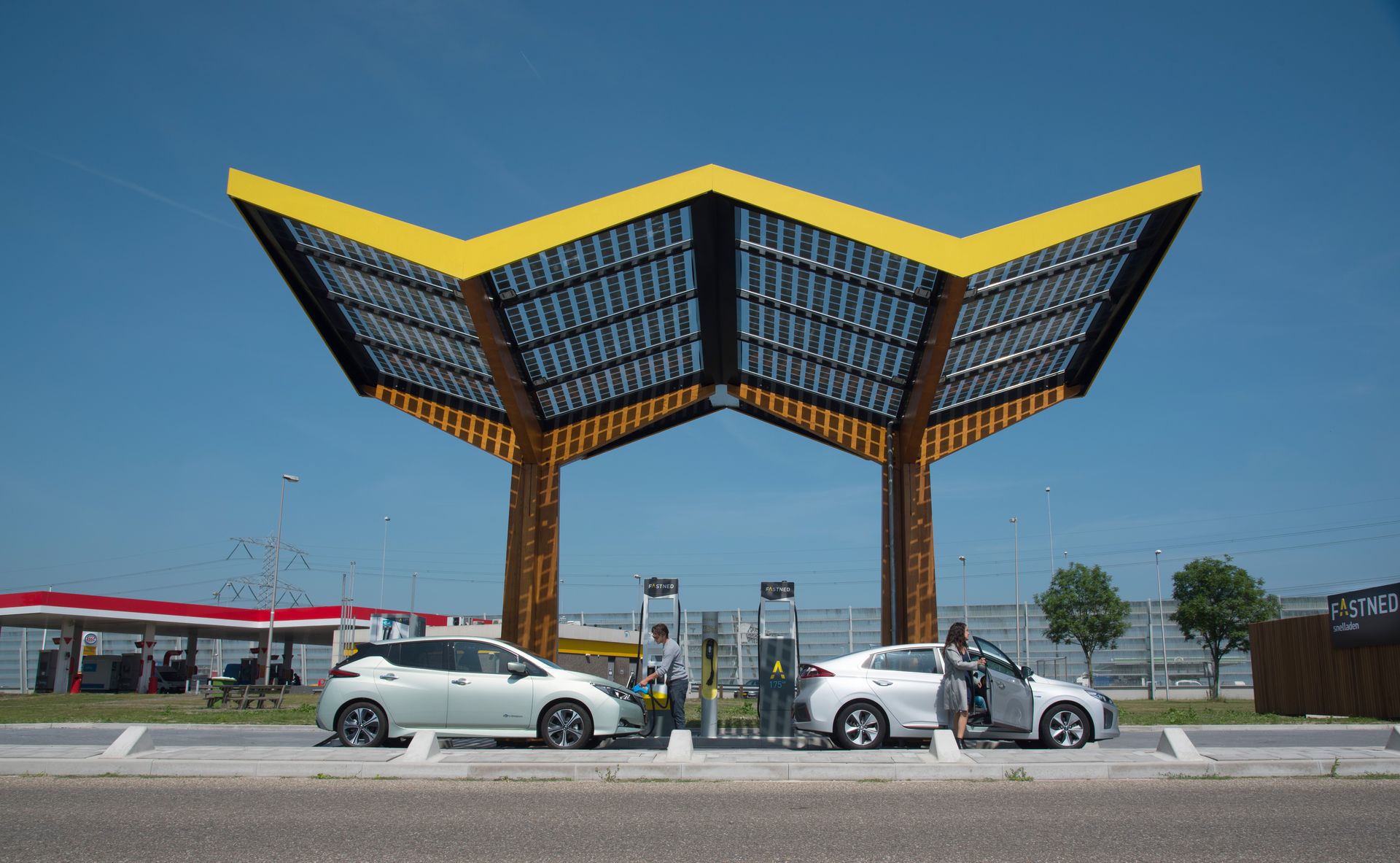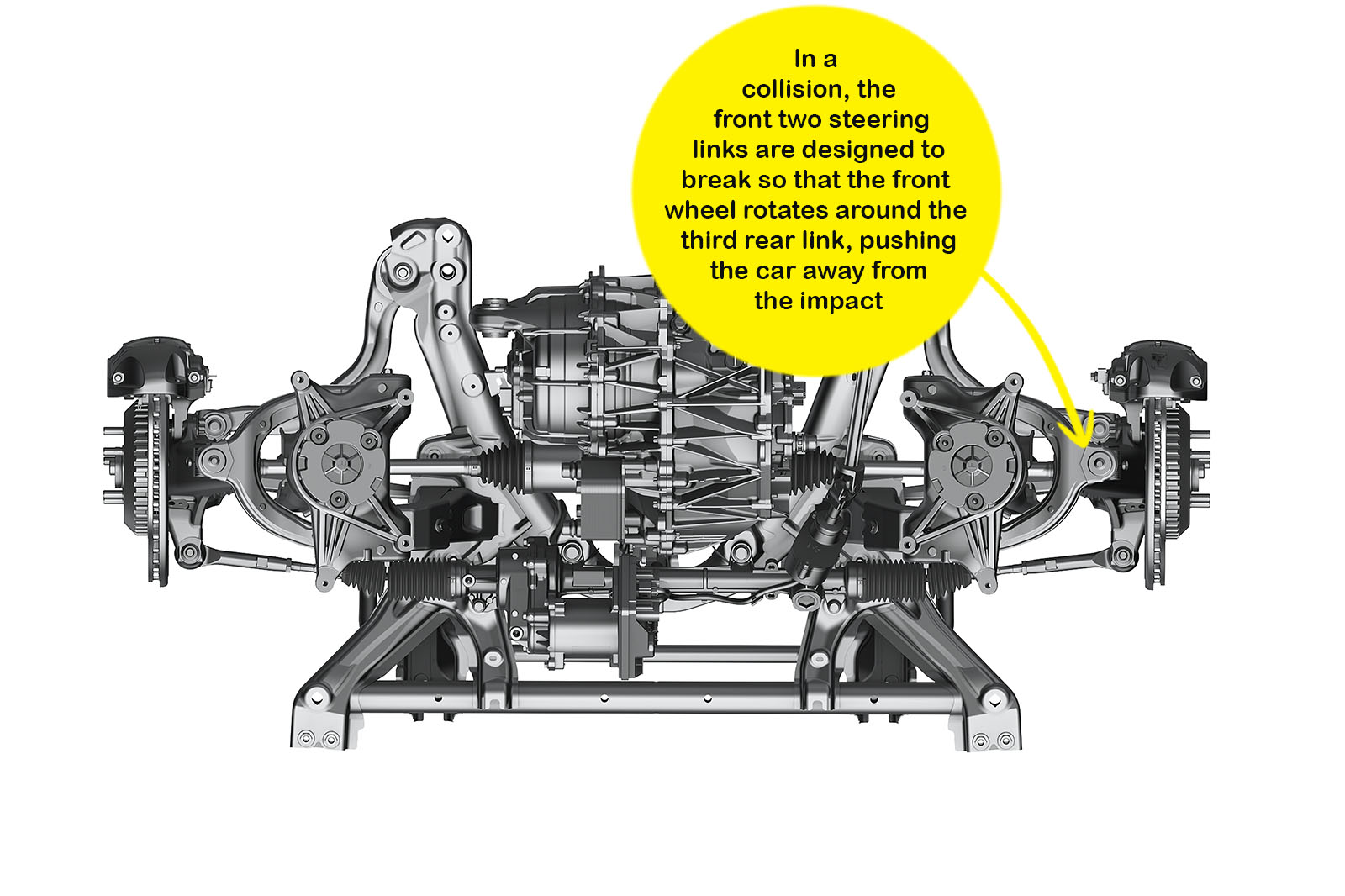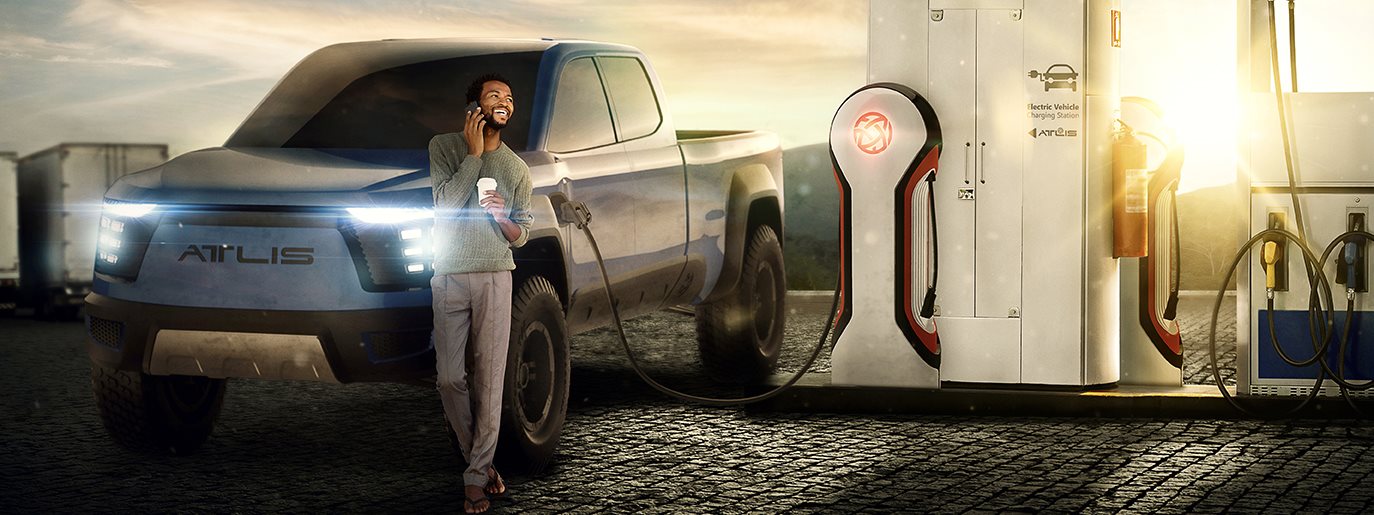[% } %]
Tag: Electric vehicles
Fastned Achieves Network Wide Operational Break Even
2 H BY MARK KANE Fastned tripled its revenues during Q3 Good news coming from the Netherlands where Fastned reports a very high growth rate of its business. The company was even able to achieve network-wide operational break even. “In September, the network as a whole surpassed break even on an operational level. All operational… Continue reading Fastned Achieves Network Wide Operational Break Even
Secret tech of the Tesla Model 3
Tesla says tyres for a high-performance electric vehicle are challenged in a way that those on a car powered by an internal combustion engine (ICE) are not. A two-wheel-drive Model 3 with a long-range battery weighs just over 1700kg, so tyres have to cope with high loads as well as a 155mph top speed (for… Continue reading Secret tech of the Tesla Model 3
Hundreds Speak Against Rollback Of Clean Car Standards At Public Hearings
Electric Cars
Electric Car Benefits
Electric Car Sales
Solar Energy Rocks
RSS
Advertise
Privacy Policy
Cars
Published on October 17th, 2018 |
by Guest Contributor
Hundreds Speak Against Rollback Of Clean Car Standards At Public Hearings
Twitter
Google+
LinkedIn
Pinterest
Facebook
October 17th, 2018 by Guest Contributor
Originally published on EVANNEX.
By Charles Morris
The US DOT and EPA recently held three days of hearings in Fresno, Dearborn, and Pittsburgh on the Trump administration’s proposal to reverse existing federal fuel efficiency and emissions standards, and members of the public had a chance to comment.
The hazardous effects of tailpipe emissions are concerning (Image: Charged)
Hundreds of people, including physicians and health advocates, former EPA officials and technology entrepreneurs, environmental advocates and local officials, testified against the plan, vastly outnumbering the handful that came out in support. Even representatives of automakers and the aluminum industry opposed the effort to water down the standards.
A former EPA analyst who spent years working on emissions policy testified that the technical analysis for this proposal was the “most biased and dishonest” he had witnessed in his 40-year career at the agency.
The DOT’s own Draft Environmental Impact Statement (DEIS) concluded: “The Proposed Action [the Trump administration’s rollback proposal] and alternatives are projected to result in an increase in energy consumption, an increase in most criteria pollutant emissions…Overall US health impacts associated with air quality (mortality, asthma, bronchitis, emergency room visits, and work-loss days) are anticipated to increase across the Proposed Action.”
The Natural Resources Defense Council’s David Pettit pointed out several shortcomings of the DOT’s DEIS at the Fresno hearing. “The alternatives analysis looks only at reductions in the CAFE standards, not increases,” he said. “None of these alternatives increases fuel economy with respect to the no action alternative, none conserves energy, and none represents maximum feasible CAFE standards. These are fundamental errors. The DEIS is fundamentally flawed and needs to be withdrawn.”
Rolling back clean car and fuel economy standards means more gasoline fill-ups for ICE vehicle owners (Image: Natural Resources Defense Council)
According to the NRDC’s Luke Tonachel, who testified in Dearborn this week, adopting the proposal would mean fewer innovative jobs, more smog, soot and carbon pollution, and higher costs for drivers filling up at the pump. The agencies’ own analysis shows that halting progress on emissions will mean 60,000 fewer jobs, an outcome that would be especially bad for Michigan, which is home to 69,593 jobs in 224 facilities that make materials or components for more fuel-efficient cars.
The agencies also admit that the plan will mean more carbon pollution. If the plan is adopted, an additional 73 billion gallons of gasoline will be consumed by the vehicles directly regulated under the proposal – an additional cost of $170 billion dollars for American drivers.
The administration’s argument that halting the pollution and mileage standards would save lives by reducing highway deaths was undercut by the EPA’s own analysts, who showed the flaws in its assumptions.
A spokesman for an aluminum industry trade group testified that the administration’s claim that automotive lightweighting would lead to more highway fatalities is false. “Numerous flawed assumptions in the draft rule are misleading and overstate potential unfavorable impacts on safety,” said Mario Greco, Chairman of the the Aluminum Transportation Group. “Automakers are not reducing the weight of small cars, but instead are prioritizing weight reductions where it offers the most promise to boost fuel economy and reduce emissions – their larger, heavier cars and trucks.”
Sources: Natural Resources Defense Council, Aluminum Transportation Group
Support CleanTechnica’s work by becoming a Member, Supporter, or Ambassador.
Or you can buy a cool t-shirt, cup, baby outfit, bag, or hoodie or make a one-time donation on PayPal.
About the Author
Guest Contributor is many, many people. We publish a number of guest posts from experts in a large variety of fields. This is our contributor account for those special people. 😀
Back to Top ↑
CleanTechnica Clothing & Cups
Advertisement
Advertise with CleanTechnica to get your company in front of our readers.
Top News On CleanTechnica
Advertisement
Follow @cleantechnica
Join CleanTechnica Today!
EV Charging Guidelines for Cities
Share our free report on EV charging guidelines for cities, “Electric Vehicle Charging Infrastructure: Guidelines For Cities.”
Advertisement
Cleantech Press Releases
The New Danish Climate Plan — Together For A Greener Future
Shift In Navajo Country As Coal Plant That Navajo Community Doesn’t Want Is Dropped
Capturing CO2 From Exhaust Pipes Is A Bad Idea That Won’t Die
The EV Safety Advantage
Read & share our free report on EV safety, “The EV Safety Advantage.”
The State of EV Charging
Our 93-Page EV Driver Report
30 Electric Car Benefits
Blockchain × Cleantech
Our Electric Vehicle Reviews
Tesla News
Correcting the Cleantech Record
38 Anti-Cleantech Myths
Wind & Solar Prices Beat Fossils
Cost of Solar Panels Collapses
© 2018 Sustainable Enterprises Media, Inc.
Electric Cars
Electric Car Benefits
Electric Car Sales
Solar Energy Rocks
RSS
Advertise
Privacy Policy
This site uses cookies: Find out more.Okay, thanks
Atlis Pickup Truck Battery Charges In Under 13 Minutes
2 H BY MARK KANE Atlis battery pack ready to charge in under a quarter of an hour. Atlis Motor Vehicles, a startup founded in 2016 to develop XT electric pickup truck and XP electric vehicle platform, achieved its first milestone. The company’s prototype battery pack was successfully tested at one of the EVgo fast… Continue reading Atlis Pickup Truck Battery Charges In Under 13 Minutes
Building a great startup requires more than genius and a great invention
Shahin Farshchi Contributor More posts by this contributor The dos and don’ts of crafting frontier-tech companies Five billion-dollar businesses for the driverless future Many entrepreneurs assume that an invention carries intrinsic value, but that assumption is a fallacy. Here, the examples of the 19th and 20th century inventors Thomas Edison and Nikola Tesla are instructive.… Continue reading Building a great startup requires more than genius and a great invention
ChargePoint users can now access networks in Canada, Europe
2014 BMW i3 REx fast-charging at Chargepoint site, June 2016 [photo: Tom Moloughney]
Plugging in an electric car should be as easy as making a call on a cell phone—only it isn't always.
Now a series of new agreements—similar to cell-phone roaming agreements that let users make calls on other networks—are beginning to make that easier.
The latest, announced Tuesday morning, is an agreement between ChargePoint, America's largest charging network, and FLO, the largest network in Canada.
DON'T MISS: ChargePoint commits to build charging stations for 2.5 million cars by 2025
The agreement will allow electric-car drivers with ChargePoint accounts to see FLO chargers in their ChargePoint apps when they're traveling in Canada and to plug in to any one of them using their ChargePoint account—and vice versa.
ChargePoint signed a similar agreement last Tuesday with EV Box, one of the leading providers of charging stations in Europe. The EV Box agreement will allow travelers renting an electric car on either continent to use their ChargePoint or EV Box account from the other. EV Box operates in 45 countries.
READ MORE: ChargePoint launches electric-car charging activated by smartphone (2017)
Such interoperability agreements depend on a common set of new charging standards used by networks, automakers, and charging station producers called Open Charge Point Interface.
It bundles billing, account, charger location and availability information, among other things into a common protocol communicated between the car, the charging station, the network, and its app to allow drivers simply to plug in and go.
Before drivers show up at a charger on any of the apps, they can see whether the charger is available, working, or in use, and the price to charge.
Behind the scenes
The announcements come on the heels of an announcement by Hubject, another company working behind the scenes to integrate the data streams of different chargers and charging networks and their apps into one common standard to enable agreements like those between ChargePoint, FLO, and EV Box.
Hubject has promoted such interoperability movements across Europe and in Israel, Japan, and Canada, and announced in June that it is setting up shop in the U.S., to bring such agreements to North America. The company works with EV Box and Ionity, a large fast-charging consortium supported by automakers in Europe. Its service includes integrating navigation directions to available charging stations within the network's apps.
The eventual goal, Hubject executives say, is for drivers not to even have to get out a credit card, but for payment to be handled automatically when the car is plugged in.
Tesla Pushes To Improve Service Center Coverage Density As Model 3 Deliveries Climb #ElonTweets
Electric Cars
Electric Car Benefits
Electric Car Sales
Solar Energy Rocks
RSS
Advertise
Privacy Policy
Cars
Published on October 17th, 2018 |
by Kyle Field
Tesla Pushes To Improve Service Center Coverage Density As Model 3 Deliveries Climb #ElonTweets
Twitter
Google+
LinkedIn
Pinterest
Facebook
October 17th, 2018 by Kyle Field
Tesla CEO @ElonMusk took to Twitter to admit that Tesla had found some gaps in its global service center coverage and is now hard at work to improve its coverage over the next 3–6 months.
Specifically, Elon shared that Tesla would push to ensure full coverage of North America with its service centers over the next 3–6 months. Looking ahead, he shared that Tesla would be working to ensure similar levels of coverage in all countries where Tesla has operations by the end of 2019.
The news comes on the heels of Tesla’s successful ramp up of production and deliveries of the Model 3 which saw tens of thousands of Teslas sent out into geographies that hadn’t seen much action in the past. The latest wave of woes for Tesla started when its Model 3 went into production in June of 2017 and was followed by a full year of production hell.
Tesla and Elon pulled out all the stops to reach the target production rate of 5,000 Model 3s per week — and they did. The herculean effort required flying in new production lines from Germany, building a new general assembly line in a “tent” in the back lot of Tesla’s Fremont factory, and calling all hands on deck to put the hurt on the production lines and force them to comply with the will of Elon.
Emerging from the darkness, Tesla’s production troubles quickly morphed into birthing pains as Tesla’s delivery teams across the US choked on the 3× increase in deliveries. Deliveries of the Model 3 are spread across a distributed network of stores spanning the United States, making it difficult to quickly deploy improvements and standards.
Just the same, Tesla calmed the storm over the course of a couple of weeks as minor production issues and the overblown panel gap issues were tuned out on the production lines. In parallel, delivery teams improved their pre-delivery check processes and squeezed out most of the delivery issues.
The look at service centers is a look at the inevitable flow of Tesla’s vehicles that will either be forced in for service after an accident or require service for something that’s just not quite right in the car. That can be something as small as replacing a door handle all the way on up to the replacement of a full drive unit.
The flow of Model 3s out into the wild will result in a similar spike in requests for service at Tesla’s service centers, though the tail of requests will lag behind deliveries, as accidents and some other service requests don’t happen on a schedule.
Elon Musk and the team at Tesla started working on service center service times a few weeks back, as soon as Model 3 customers started voicing complaints of lengthy service times, with waits of several months for repairs being the norm. As part of the push, Tesla brought body shop work in-house at a few key locations in an attempt to streamline the repair process for its vehicles.
Early reports on the new service were positive, with some customers getting their repaired vehicles back in just a few hours. Same day turnaround is still far from the norm, but it showed that Tesla was working towards solutions and had some results to show for its early efforts.
Today’s tweets from Elon confirm that there is still work to do just to achieve the critical mass of service centers that would be required to get Tesla’s cars serviced. Beyond the base coverage, there is still work to do to ensure that all of its service center personnel are sufficiently trained and that the centers have the parts needed to get its vehicles repaired in a reasonable amount of time.
Tesla has pushed the envelope in just about every piece of its business, and service is no exception, as it has historically utilized its service teams to come pick up vehicles for service, leaving a loaner vehicle with the owner. Doing this drastically reduces the amount of effort required from the owner and from personal experience, it makes service all but a non-issue.
That wasn’t good enough so Tesla kept on innovating, deploying a roaming network of repair personnel, which it calls Rangers, that were trained and equipped to fix just about any issue on a Tesla that didn’t require a lift. That was estimated to be around 80% of all repairs and Tesla delivered in spades.
I utilized Tesla’s Ranger service to have the door handles on our Model S replaced. The service went off without a hitch and was actually a great experience. Tesla had already committed to doubling its mobile service fleet by the end of this year and the renewed focus on service center coverage is surely a part of its efforts to ensure timely and efficient service for all of its customers.
With every new day, there comes a new challenge. Today, it’s service center coverage; tomorrow, the moon!! Okay, so maybe Mars is the target, but the moon sounded better.
Support CleanTechnica’s work by becoming a Member, Supporter, or Ambassador.
Or you can buy a cool t-shirt, cup, baby outfit, bag, or hoodie or make a one-time donation on PayPal.
About the Author
Kyle Field I'm a tech geek passionately in search of actionable ways to reduce the negative impact my life has on the planet, save money and reduce stress. Live intentionally, make conscious decisions, love more, act responsibly, play. The more you know, the less you need. TSLA investor.
Back to Top ↑
CleanTechnica Clothing & Cups
Advertisement
Advertise with CleanTechnica to get your company in front of our readers.
Top News On CleanTechnica
Advertisement
Follow @cleantechnica
Join CleanTechnica Today!
EV Charging Guidelines for Cities
Share our free report on EV charging guidelines for cities, “Electric Vehicle Charging Infrastructure: Guidelines For Cities.”
Advertisement
Cleantech Press Releases
The New Danish Climate Plan — Together For A Greener Future
Shift In Navajo Country As Coal Plant That Navajo Community Doesn’t Want Is Dropped
Capturing CO2 From Exhaust Pipes Is A Bad Idea That Won’t Die
The EV Safety Advantage
Read & share our free report on EV safety, “The EV Safety Advantage.”
The State of EV Charging
Our 93-Page EV Driver Report
30 Electric Car Benefits
Blockchain × Cleantech
Our Electric Vehicle Reviews
Tesla News
Correcting the Cleantech Record
38 Anti-Cleantech Myths
Wind & Solar Prices Beat Fossils
Cost of Solar Panels Collapses
© 2018 Sustainable Enterprises Media, Inc.
Electric Cars
Electric Car Benefits
Electric Car Sales
Solar Energy Rocks
RSS
Advertise
Privacy Policy
This site uses cookies: Find out more.Okay, thanks
Breaking News — Tesla Seals The Deal For Gigafactory 3 In China
Electric Cars
Electric Car Benefits
Electric Car Sales
Solar Energy Rocks
RSS
Advertise
Privacy Policy
Batteries
Published on October 17th, 2018 |
by Steve Hanley
Breaking News — Tesla Seals The Deal For Gigafactory 3 In China
Twitter
Google+
LinkedIn
Pinterest
Facebook
October 17th, 2018 by Steve Hanley
It’s official. Tesla has acquired just under 1300 acres of land in the Shanghai Lingang Equipment Industrial Zone for its Gigafactory 3. The factory is expected to cover about 1200 of those acres. The official signing ceremony for the transfer of land to Tesla took place in China on October 17, today.
Tesla is pushing hard to get the Gigafactory 3 project moving forward. Thanks to the tit for tat trade war initiated by the current US president and his crack team of economic advisers, Tesla cars manufactured in America now must pay an import tariff of 40%, making it hard for them to compete against locally produced automobiles. Cars built in the new factory outside Shanghai will be exempt from that tariff.
Tesla plans to be a major force in the Chinese new car market, especially as China institutes its latest EV policy starting January 1, 2019. After that date, every manufacturer building cars in the country will be required to produce a certain percentage of electric cars, known locally as new energy vehicles. Battery electric cars will get the most credits under the system. Plug-in hybrids will get a smaller credits.
Companies who wish to continue building cars with gasoline or diesel engines will be required to buy credits in order to do so. That will raise the selling price of those cars, making new energy vehicles more competitive in the marketplace.
Last month, Tesla began advertising numerous jobs for construction workers to help build the new factory, which is expected to have a capacity of 500,000 vehicles a year. Tesla expects the factory to begin producing cars in fewer than 2 years time — an incredibly short ramp up from breaking ground on the factory to getting cars rolling off the assembly line and into the hands of customers. But when have short timelines ever been a problem for Tesla?
It reportedly has increased the funding committed to the Gigafactory 3 project to $681 million. And as Vincent indicates on Twitter, local banks in the Shanghai area are actively engaged in lining up the additional funding needed to build GF3.
With the biggest new car market in the world, China is an important market for Tesla. Just how important is indicated by the fact that it is moving forward aggressively with plans for a Chinese factory before committing to a factory in Europe. Check out this video from the World Economic Forum on the rosy prospects for electric cars in China:
Check out more Tesla China news if this isn’t enough for you.
Support CleanTechnica’s work by becoming a Member, Supporter, or Ambassador.
Or you can buy a cool t-shirt, cup, baby outfit, bag, or hoodie or make a one-time donation on PayPal.
About the Author
Steve Hanley Steve writes about the interface between technology and sustainability from his home in Rhode Island and anywhere else the Singularity may take him. His muse is Charles Kuralt — “I see the road ahead is turning. I wonder what's around the bend?”
You can follow him on Google + and on Twitter.
Back to Top ↑
CleanTechnica Clothing & Cups
Advertisement
Advertise with CleanTechnica to get your company in front of our readers.
Top News On CleanTechnica
Advertisement
Follow @cleantechnica
Join CleanTechnica Today!
EV Charging Guidelines for Cities
Share our free report on EV charging guidelines for cities, “Electric Vehicle Charging Infrastructure: Guidelines For Cities.”
Advertisement
Cleantech Press Releases
The New Danish Climate Plan — Together For A Greener Future
Shift In Navajo Country As Coal Plant That Navajo Community Doesn’t Want Is Dropped
Capturing CO2 From Exhaust Pipes Is A Bad Idea That Won’t Die
The EV Safety Advantage
Read & share our free report on EV safety, “The EV Safety Advantage.”
The State of EV Charging
Our 93-Page EV Driver Report
30 Electric Car Benefits
Blockchain × Cleantech
Our Electric Vehicle Reviews
Tesla News
Correcting the Cleantech Record
38 Anti-Cleantech Myths
Wind & Solar Prices Beat Fossils
Cost of Solar Panels Collapses
© 2018 Sustainable Enterprises Media, Inc.
Electric Cars
Electric Car Benefits
Electric Car Sales
Solar Energy Rocks
RSS
Advertise
Privacy Policy
This site uses cookies: Find out more.Okay, thanks
Tesla buys new plot for its first China factory
Source: Shanghai Municipal People's Government
Shanghai Mayor Ying Yong and Tesla Chairman and CEO Elon Musk pose in from of a plaque for the Tesla (Shanghai) Ltd. Electric Vehicle Development and Innovation Center.
Tesla successfully acquired an 864,885-square meter plot in Shanghai's Lingang area for the electric car maker's new factory, according to an announcement from Lingang Wednesday afternoon. No price was immediately disclosed.
Plans for the wholly-owned factory were first announced in July. Lingang is located on the coast, about 47 miles southeast of the center of Shanghai or a roughly two-hour subway ride. Several auto manufacturers with foreign ties have facilities there, and unmarked test vehicles can be seen roaming the streets.
Tesla expects the factory to produce its first cars in three years, according to an earnings release in August. The facility will initially have capacity for about 250,000 vehicles and battery packs a year, and plans to eventually double that, the release said.
Funding will mostly come from local debt, and Tesla's own investment “will not start in any significant way until 2019,” the company said in the August release.
Producing cars in China, the world's largest market for electric vehicles, would significantly lower costs for Tesla.
The company noted in an Oct. 2 report it cannot access the same cash incentives as local Chinese manufacturers, and overall ocean transport costs and tariffs mean the automaker is operating at a 55 percent to 60 percent cost disadvantage compared with a domestic equivalent.
Shanghai-based Nio, nicknamed the “Tesla of China,” went public in the U.S. in September and said earlier this week it beat its own fiscal third quarter production target by several hundred vehicles. Baillie Gifford, Tesla's largest outside investor, disclosed earlier this month an 11.4 percent stake in Nio.
—CNBC's Robert Ferris contributed to this report.



